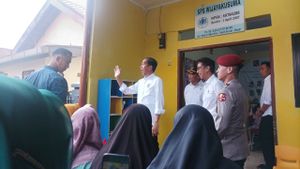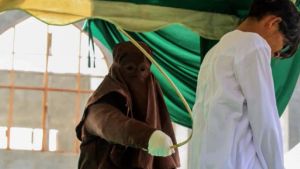JAKARTA - Kembangan sub-district, West Jakarta became the first area where the wolbachia mosquito was spread by the DKI Jakarta Provincial Government to suppress the number of dengue hemorrhagic fever (DBD) cases.The Kembangan sub-district Joko Sukarno admitted that the largest number of dengue cases in Jakarta was in Kembangan. Thus, the government prioritized the region with the highest DHF spread as the first location of Expenditure spread. "Through various assessment aspects, (Regions) including the high case of dengue fever. Thus, it was recommended that Kembangan sub-districts become the pioneer of the wolbachia mosquito program," Joko told reporters, Tuesday, June 11. Joko explained, his party had also carried out socialization over the spread of the▁sapibbachia mosquito and its goal to be understood by the community. "Socialization has been implemented in 6 sub-districts of the puskesmas," Joko explained. Then mosquitoes will breed and produce a population of Aedes aegypti mosquitoes in a turbulent environment. Director General of Disease Prevention and Control of the Ministry of Health Maxi Rein Rondonuwulululu spreads a wild female mosquito without Bulkbachia bacteria, then the dengue virus that exists in a blocked female mosquito, so that its eggs are not hatched. In Indonesia, male mosquito eggs that are Wolbachia and female are included in buckets deposited in residents' homes. Then mosquitoes will breed and produce populations of Aedes aegypti mosquitoes in a turbulent environment. The Director General of Disease Control of the Ministry of Health, Maxi Rein Rondonuwululu, the spread of nillbachia mosquitoes has been shown to be effective in lowering cases of dengue fever in Yogyakarta City. Since the first time it was spread in 2017, he said, the wolbachia mosquito has been shown to be able to reduce 77 percent of dengue events and 86 percent of incidence in hospitals. According to the monitoring of the Ministry of Health and health services in Semarang, Kupang, Bontang, Bandung, and West Jakarta, namely the cities where mosquitoess are wolbachia distributed, the concentration of
SEE ALSO:
This figure, according to him, is still below the percentage of aedes aegypti wolbachia mosquitoes, which ideally reaches 60 percent in nature. "After the population reaches 60 percent, the release of a wolbachia mosquito bucket will be withdrawn and the result of a decrease in dengue cases will only begin to appear after 2 years, 4 years, 10 years, and so on, such as the implementation carried out in Yogyakarta City," said Maxi some time ago.
The English, Chinese, Japanese, Arabic, and French versions are automatically generated by the AI. So there may still be inaccuracies in translating, please always see Indonesian as our main language. (system supported by DigitalSiber.id)











